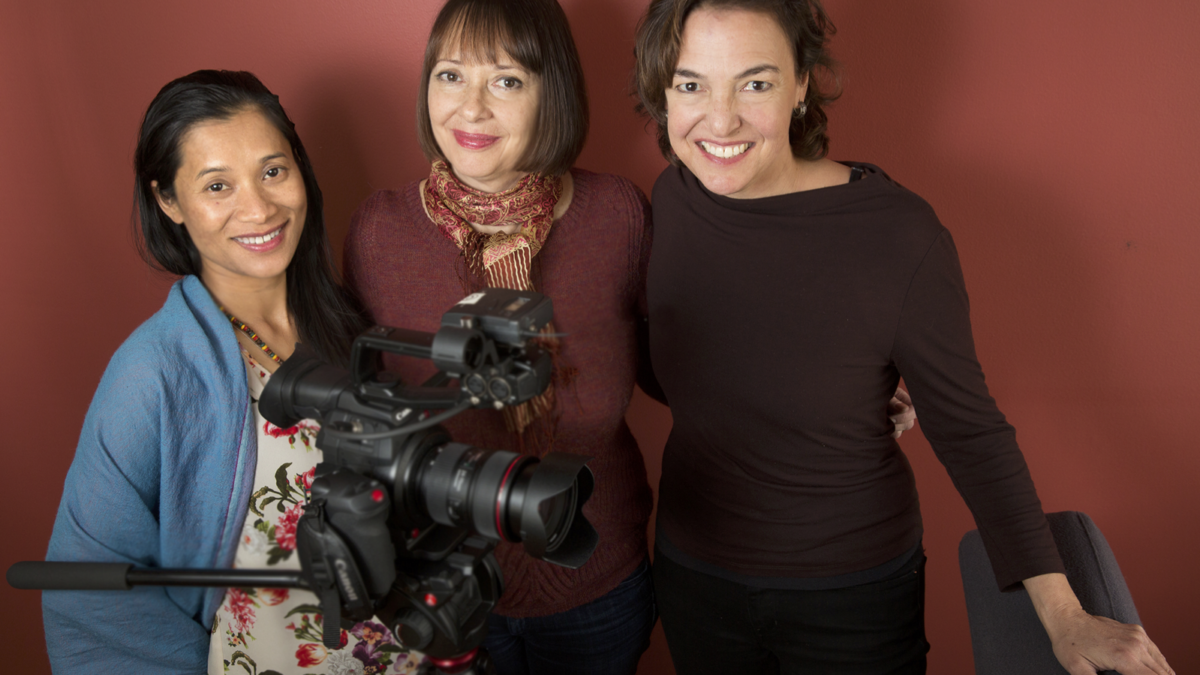In the feature film PAINTED NAILS, Van Hoang, a Vietnamese immigrant and nail salon owner, becomes one of the first workers in decades to testify against the cosmetic industry before Congress, after discovering that her two miscarriages were caused by cosmetic toxins. The documentary presents a touching story about the journey of an immigrant family, and one woman’s rise to activism in the face of adversity.
Justine Shani at CineVue got the chance to interview Dianne Griffin and Erica Jordan, who shared the producer and director roles on PAINTED NAILS. The film was featured on July 24, 2016 in the 39th annual AAIFF. To learn more about AAIFF, click here.
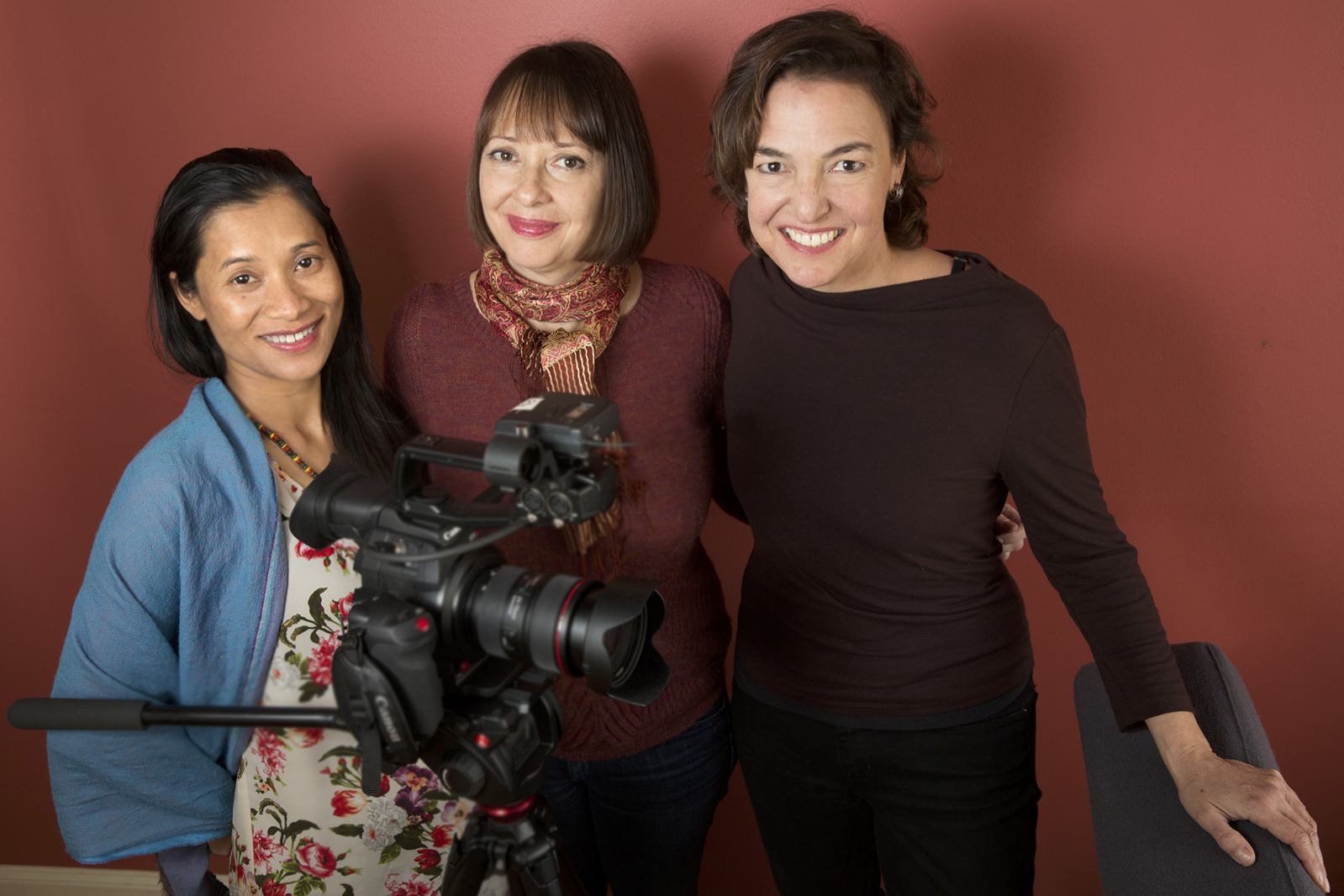
(L to R): PAINTED NAILS translator and associate producer, Nhung Hoang Pham; co-directors/producers Dianne Griffin and Erica Jordan. Credit: DigallMedia
Justine Shani: To start out, can you each introduce yourself and talk a little bit about your background?
Erica Jordan: I’ve been making documentaries and narrative films for many years, including the documentary IN PLAIN SIGHT, which premiered at Mill Valley Film Festival a couple of years ago. My narrative work includes two feature narrative films: WALLS OF SAND, about the friendship between an undocumented Iranian and an agoraphobic American, and their search for freedom, and IN THE WAKE, which explores the life of a young artist in San Francisco. I was interested in collaborating with Dianne because I respect her work as a documentary filmmaker and we had a history of discussing our filmmaking ideas. I’m currently working on a new feature-length documentary called BOUND TO FREEDOM, which will be released this fall.
Dianne Griffin: I’ve been working as a documentary filmmaker for around twenty-five years. I co-produced the feature documentary WHITE HOTEL about two women whose objectivity is shattered while documenting an HIV research team in Eritrea, Africa. I made several international projects for the United Nations, Women’s Global Fund and Hewlett Packard, which took me to Southeast Asia, Nepal and Iran. I feel fortunate to work with Erica, since I’ve admired her work as a filmmaker. Since PAINTED NAILS was shot in our hometown of San Francisco, we were able to spend a lot of time with our main subject, Van Hoang and create an intimate character-driven documentary. I’m now producing and in development with a couple other documentary projects.
JS: How did you come to be aware of this issue?
DG: We were initially interested in exploring the proliferation of nail salons in San Francisco and the desire of so many women to have beautiful nails, often long and elaborately decorated. When we met Van Hoang, she invited us into her life and our story took us further and deeper than we imagined. We worked with an incredible translator and associate producer, Nhung Hoang Pham, who guided us and was a bridge into the Vietnamese community.
EJ: After following Van Hoang and her family, we soon realized that the devastating effects of the chemicals on Van’s life were an important focus of this film. At the same time, activists committed to creating change in the nail industry were educating the world about the issues surrounding nail products. San Francisco became the first city in the US to adopt the Safe Cosmetics and Personal Care Product Act, an ordinance for nail salons to have the 3-Free products [meaning they don’t use toluene, dibutyl phthalate (DBP) or formaldehyde–all known carcinogens].
DG: When we initially approached Van to work on the documentary, she was immediately open to being interviewed…She was one of the first to testify before a congressional hearing in over 35 years about the impact the toxic chemicals have on her health. Van’s story is extra poignant because she is an immigrant and came to the US with the assumption that she would be working in a safe environment.
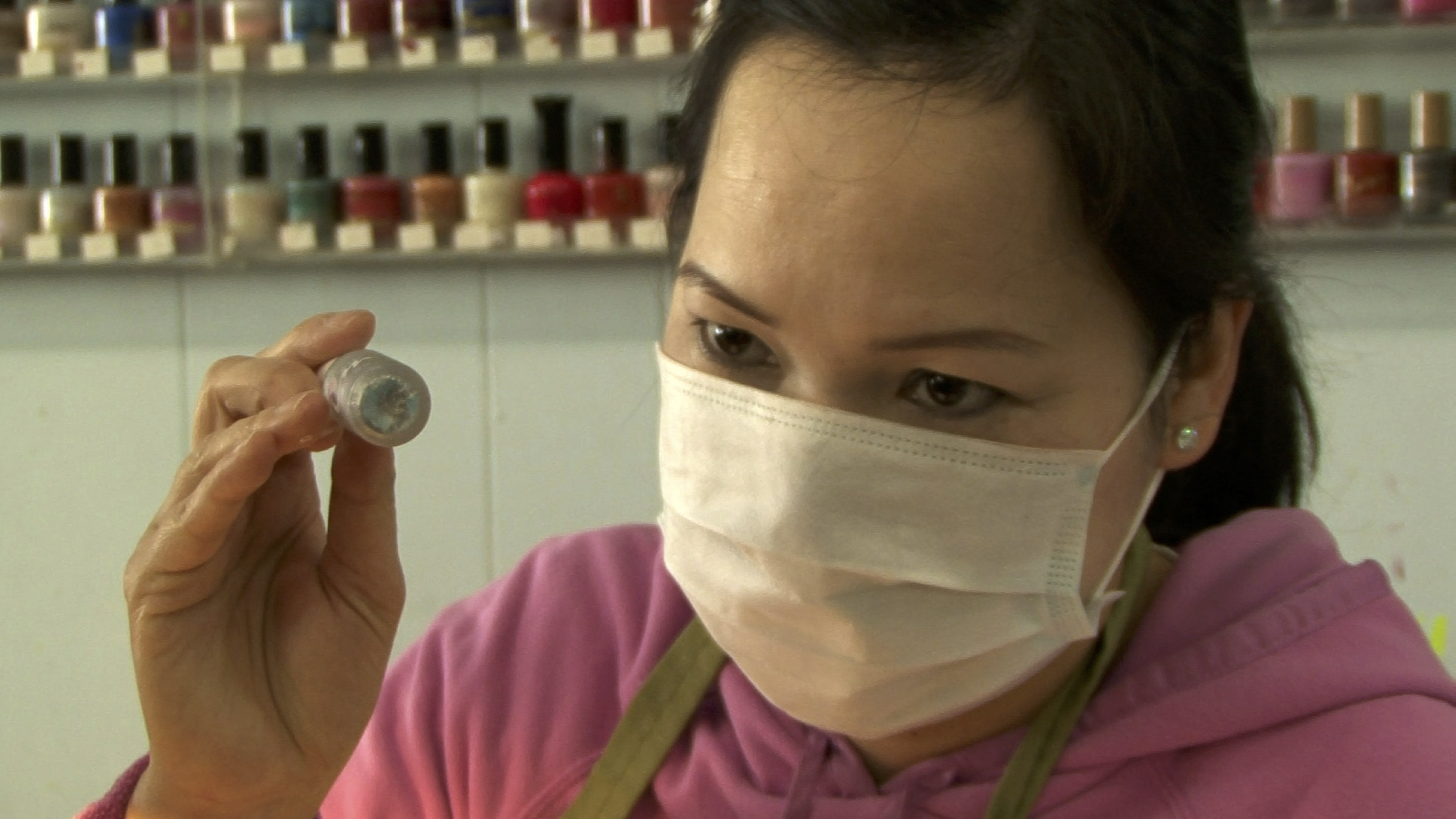
Van Hoang in PAINTED NAILS. Credit: DigallMedia
JS: I’m curious about your take on the role of the documentarian shaping the course of the action that they’re documenting. How much did you help Van to be aware of these issues?
EJ: I think it would be untruthful for any documentary filmmaker to say that they have no influence on the subject of the film, because it becomes a collaboration between the filmmakers and the subjects. The questions we asked Van about the chemicals in her salon made her more aware of the conflict between her livelihood and her health. There’s a scene in the film that really speaks to our relationship with Van, where she reveals that the filmmaking process made her realize that she had something valuable to share with the world.
DG: We spent a lot of time with Van going to her salon, home, doctor visits and social events. How could we as filmmakers not influence the story in some way? With Nhung Pham, we tried to create a supportive and safe environment for Van. We also followed her deepening advocacy work with The Healthy Nail Salon Collaborative and her willingness to speak out about working with harmful chemicals. We became more aware of change that needs to take place in, not only nail salon products, but in personal care products overall. The regulation of chemicals in nail products is dictated by the Cosmetic Act of 1938 and the part of the law that deals with cosmetics totals just 591 words.
JS: So the film has the storyline of what goes down in Washington, D.C., and the drama of whether or not the ordinance will move forward. But it also deals with the nuances of Van in her own community and the health problems that she experiences. From a filmmaking perspective, what was it like creating the structure of the documentary and bringing these different elements together?
EJ: Dianne and I were very interested in making a character-driven documentary, where you know the main character intimately, which can conflict with an issue-based documentary. Through many edits, we found a balance where the audience learns about the issues, but remains engaged in Van’s personal and political transformation. PAINTED NAILS is about these issues, but it is also about the power of a woman–a working immigrant woman–and her courage to fight for change.
DG: We didn’t want to take away from Van’s story, but it was crucial to show that this is a US issue by adding the credibility of reliable national sources. Van’s experience is not an isolated incident. Her story encapsulates that of so many nail industry workers and the millions of women who rely on their services. Van is now one of the leading spokespersons who regularly testifies to assist with initiating new legislation, such as the Safe Cosmetics Act.
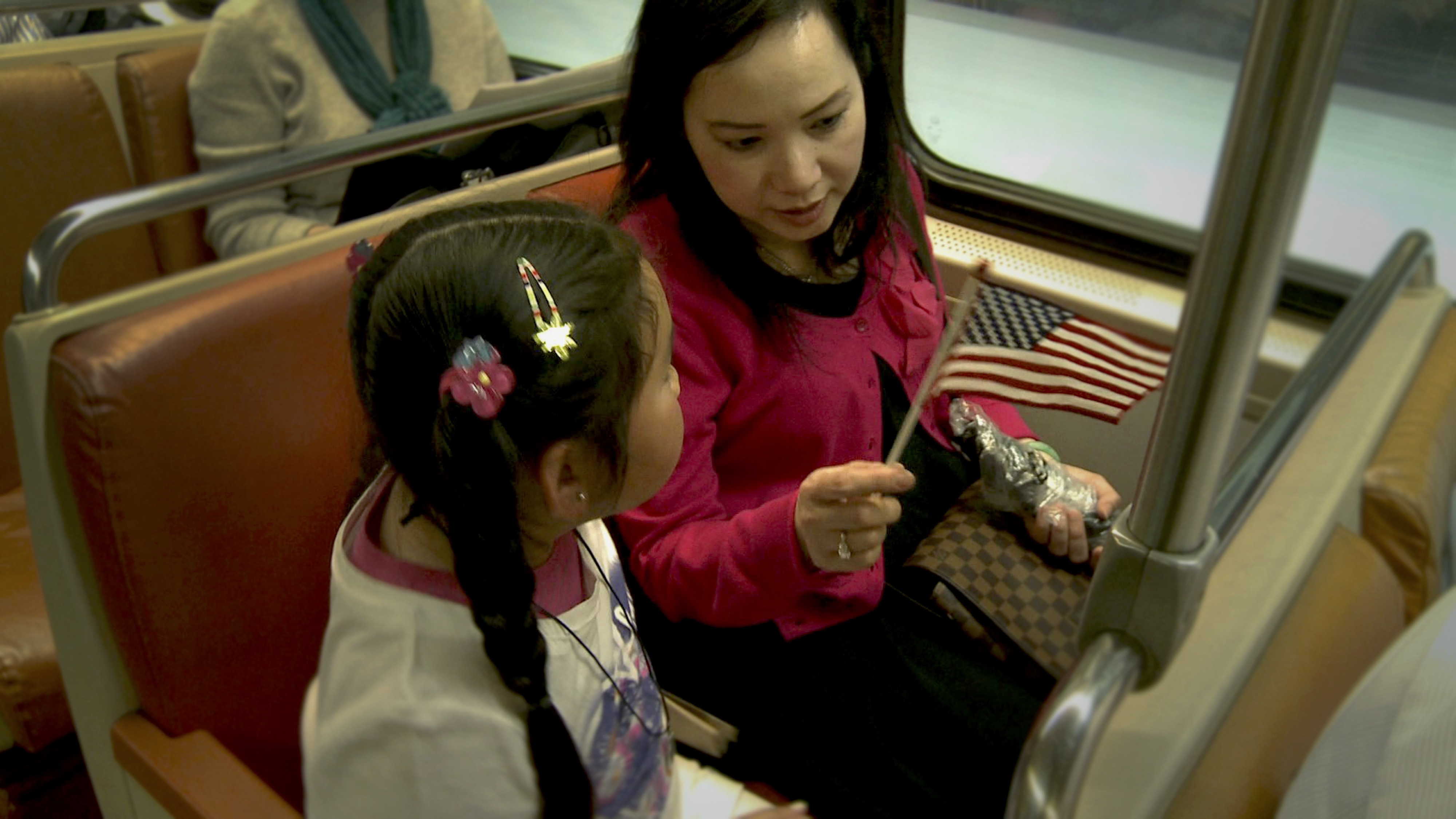
Van Hoang and her daughter in PAINTED NAILS. Credit: DigallMedia
JS: The film deals with miscarriage, which can be a taboo topic. When you made it, were you thinking about women’s health issues?
EJ: If you look at our past work, both of us have been very interested telling stories about women. And, of course, nail salons are predominantly run by women. We kept the crew very small. It was just Dianne, Nhung and me going into the salon to film, which created an intimate environment. I believe she felt we cared, as women.
DG: We created a trusting relationship with Van, which helped her to open her life to us, but we want to give Van a lot of credit here. She is an incredibly giving and trusting person. I don’t think there are many people who would be as open and vulnerable as Van was. It was real gift to us and our audience.
JS: What are your influences in documentary filmmaking?
DG: Ross McElwee’s SHERMAN’S MARCH and the personal documentary genre deeply influenced me. He didn’t understand why it was necessary for the filmmaker to remain invisible behind the camera. It was a transformative experience working on WHITE HOTEL in East Africa. Although I wouldn’t consider PAINTED NAILS a personal documentary, we still chose to leave our presence, however small, throughout the story. In certain moments, we chose to be not only observers, but participants.
EJ: I’m excited about work that pushes the limits of documentary and narrative filmmaking. Since we’ve grown up making documentaries in the formal style of talking heads and B-roll, it’s inspirational when I see a filmmaker think outside the box. I’m looking at how to talk about an issue without being didactic, so that viewers can go through the process of learning, not only on an intellectual level, but on an emotional level.
JS: I just find it very interesting, storytelling and the different ways of getting the story across.
EJ: How can you be a documentary filmmaker and an artist? There’s nothing wrong with the journalistic approach, but I think that there is room for making the documentary an art form. I’m currently developing a feature script which will be shot in Lake County, CA. I’m interested in incorporating both documentary and narrative filmmaking styles.
DG: There are many forms of documentary filmmaking now. Finding a story that you wouldn’t mind spending time with is important. In documentary filmmaking you have an idea of what the story will be, but as time passes, it can evolve into something more than ever imagined.
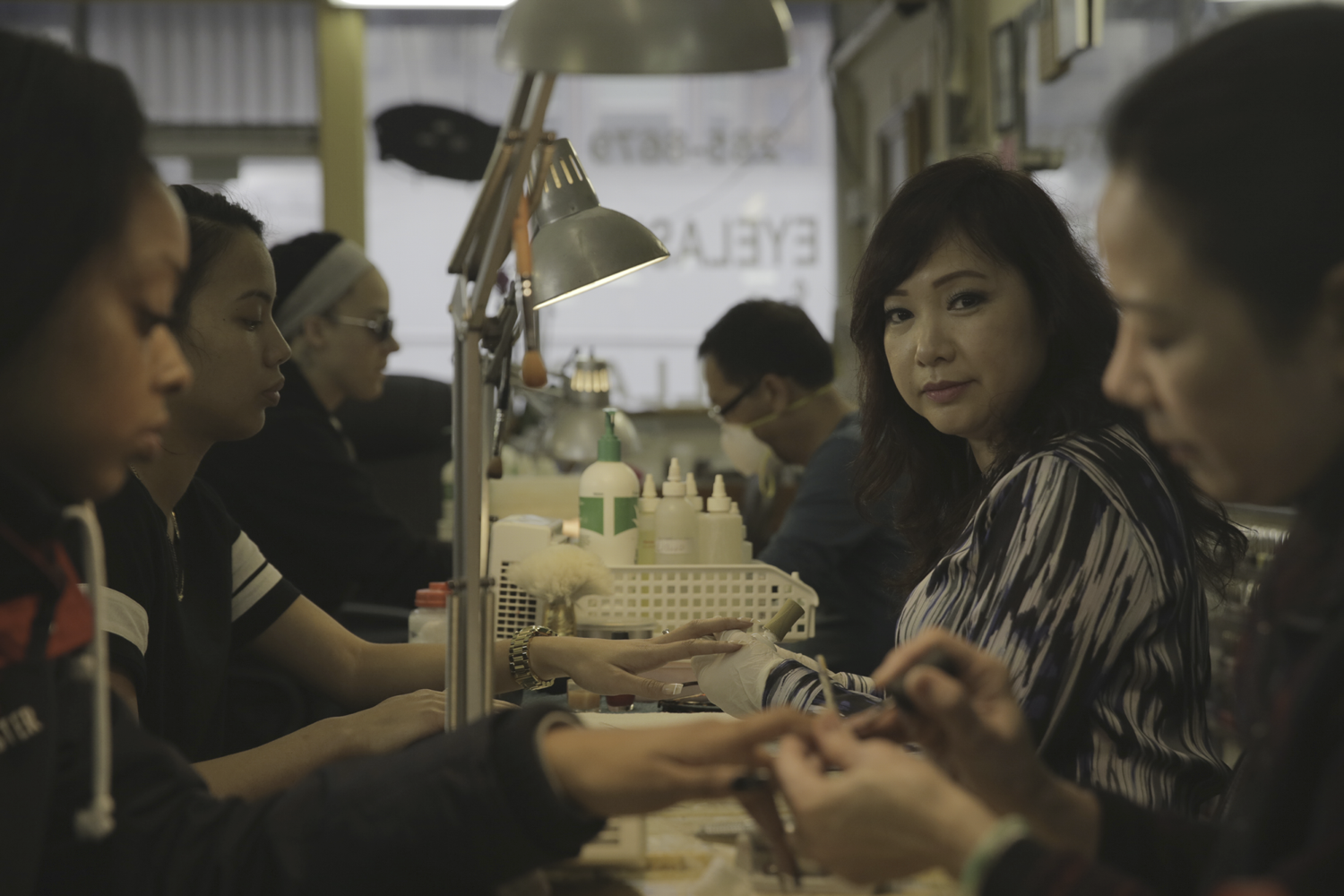
Van Hoang in PAINTED NAILS. Credit: DigallMedia
Visit PaintedNailsMovie.com for more information on the film. Painted Nails is presented by DigAll Media, a 501(c)(3) San Francisco based non-profit organization, was organized to create media, which deepen public understanding of issues that affect our lives, expand cultural, environmental and global awareness, educate a diverse population, empower the disenfranchised, and initiate personal and social change.
For more information about the Safe Cosmetics and Personal Care Product Act, check out the film’s partners, The California Healthy Nail Collaborative, Women’s Voices For The Earth, and The Campaign for Safe Cosmetics.

